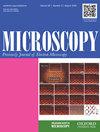蕨类配子体植物细胞发育和细胞器运动的光依赖时空控制
IF 1.8
4区 工程技术
引用次数: 1
摘要
蕨类植物单倍体配子体具有结构简单、对光敏感性高等优点,是细胞生物学研究的优良实验材料。发育过程的每一步,如细胞生长、细胞周期和细胞分裂的方向,都是由光一步一步控制的,这与复杂的种子植物组织不同。为了在细胞或细胞器水平上进行分析,我们开发了特殊的工具、仪器和技术,如适用于特定方向重复离心的试管、用于部分细胞照射的微束辐照器和用于产生去核细胞的单细胞连接技术。我们的一些主要发现如下:(1)长原丝细胞中细胞核的细胞内位置通过离心的变化表明,细胞核位置或与细胞核共离心的一个或多个因子对于决定蛋白酶前带的形成位置和消失时间很重要,其确定新细胞壁附着到母细胞壁的位置;(2) 即使在单个细胞内,蓝光或红光也可以诱导各种现象,蓝光或红灯受体的定位因现象而异;(3) 从头信使核糖核酸合成不参与光诱导叶绿体运动的信号转导途径。本文除介绍蕨类配子体的生理学研究结果外,还介绍了各种显微技术。本文章由计算机程序翻译,如有差异,请以英文原文为准。
Light-dependent spatiotemporal control of plant cell development and organelle movement in fern gametophytes
The haploid gametophyte generation of ferns is an excellent experimental material for cell biology studies because of its simple structure and high sensitivity to light. Each step of the developmental process, such as cell growth, cell cycle and the direction of cell division, is controlled, step by step, by light, unlike what happens in complex seed plant tissues. To perform analyses at the cell or organelle level, we have developed special tools, instruments and techniques, such as a cuvette suitable for repeated centrifugation in particular directions, microbeam irradiators for partial cell irradiation and single-cell ligation technique to create enucleated cells. Some of our main discoveries are as follows: (1) changes in the intracellular position of the nucleus in long protonemal cells by centrifugation revealed that the nuclear position or a factor(s) that is/are co-centrifuged with the nucleus is important for the decision regarding the place of the formation of preprophase bands and the timing of their disappearance, which determines the position where the new cell wall attaches to the mother cell wall; (2) even within a single cell, various phenomena could be induced by blue or red light, with the localization of the blue or red light receptors being different depending on the phenomenon; (3) de novo mRNA synthesis is not involved in the signal transduction pathways underlying light-induced chloroplast movements. In this review article, various microscopic techniques, in addition to the results of physiology studies in fern gametophytes, are described.
求助全文
通过发布文献求助,成功后即可免费获取论文全文。
去求助
来源期刊

Microscopy
工程技术-显微镜技术
自引率
11.10%
发文量
0
审稿时长
>12 weeks
期刊介绍:
Microscopy, previously Journal of Electron Microscopy, promotes research combined with any type of microscopy techniques, applied in life and material sciences. Microscopy is the official journal of the Japanese Society of Microscopy.
 求助内容:
求助内容: 应助结果提醒方式:
应助结果提醒方式:


